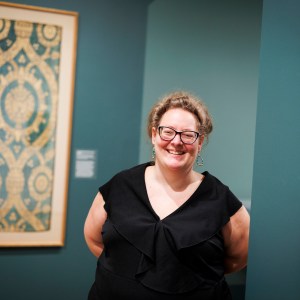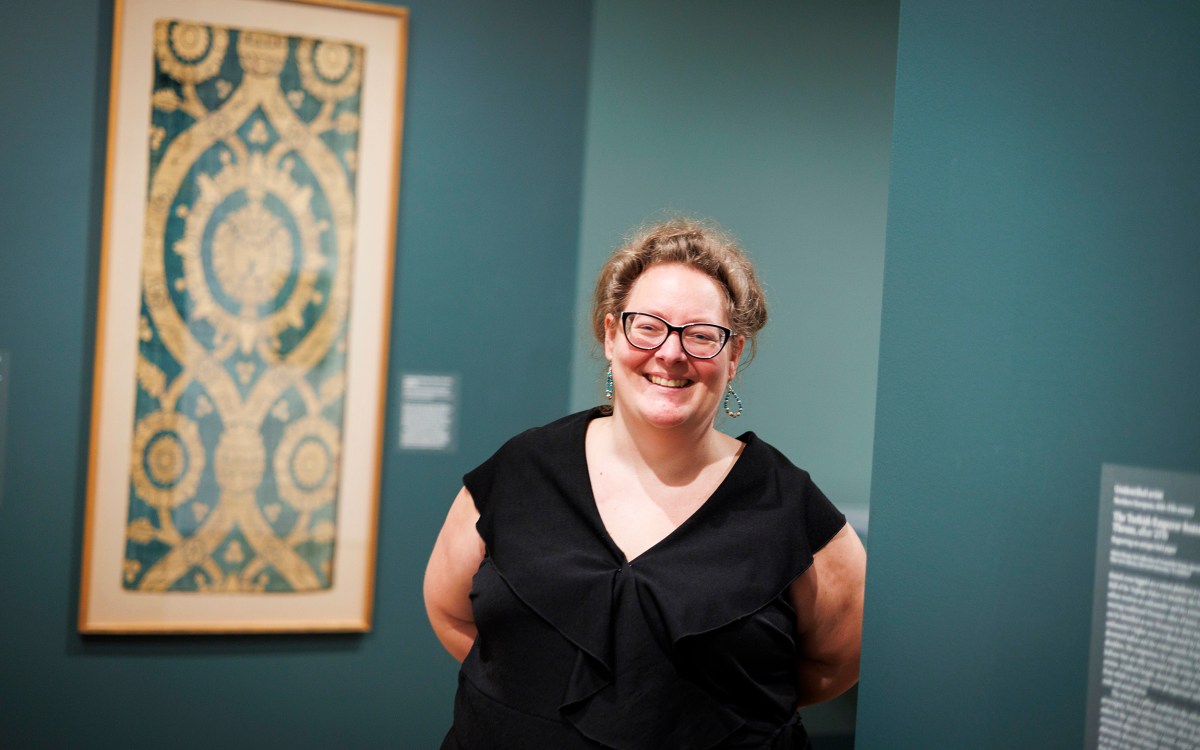Provocative Civil War exhibit at Fogg to coincide with inauguration
An exhibition opens at the Fogg Art Museum this Saturday (Oct. 6) that will have lots of people talking.
“Harper’s Pictorial History of the Civil War (Annotated),” a series of 15 black-and-white prints by Kara Walker, is scheduled to coincide with the inauguration of Harvard President Drew Faust. The exhibition will also serve as the context for a series of discussions led by scholars from around the University that will focus on history, race, gender, sexuality, and other issues raised (but by no means resolved) by Walker’s work.
“We wanted to do something that was related to Drew Faust’s scholarship,” said Susan Dackerman, the Carl A. Weyerhaeuser Curator of Prints at the University Art Museums. “We thought that the work of a contemporary artist could provide a platform for conversations about visual culture and the legacy of the Civil War. And making the gallery a more conversational space would be a way to participate in the educational mission of the University.”
Faust, a noted scholar of the Civil War era, is the author of such works as “The Ideology of Slavery: Proslavery Thought in the Antebellum South, 1830-1860” (1981); “The Creation of Confederate Nationalism: Ideology and Identity in the Civil War South” (1988); and “Mothers of Invention: Women of the Slaveholding South in the American Civil War” (1996).
If the museum staff’s object was to stimulate discussion, they could hardly have chosen a more appropriate artist than Walker. Born in Stockton, Calif., in 1969, Walker studied at the Rhode Island School of Design where she began searching for a visual language to explore her African-American heritage. The style she evolved combines the old-fashioned gentility of the silhouette with disturbingly ambiguous images of violence and sexuality.
The recipient of a MacArthur “genius” grant in 1997 when she was 28, Walker last exhibited her work at Harvard in 1998. Her 150-foot installation (“Presenting Negro Scenes Drawn Upon My Passage Through the South and Reconfigured for the Benefit of Enlightened Audiences Wherever Such May Be Found by Myself, Missus K.E.B. Walker, Colored, 1997”) was shown in the Carpenter Center and was the subject of a two-day symposium on the use of black stereotypes in contemporary art.
In the upcoming exhibition, Walker has taken a series of engravings published in Harper’s Magazine in 1866 and blown them up to large size. Her “annotations” consist of black figures in silhouette superimposed over these scenes. Walker’s figures, whose actions and meanings are deliberately ambiguous, appear to comment on the engravings, undermining the sense of finality that the pictorial narrative seeks to impose on historical events.
“We’ve been taught that the Civil War resolved racial tensions in this country,” Dackerman said. “But you can also argue that the Civil War and the way the war was written about and portrayed has institutionalized our fantasies about race, violence, and sexuality.”
Dackerman hopes that Walker’s suggestive images will stimulate discussions about these difficult issues and that the informal space of the gallery will prove the ideal forum for such explorations.
“These images are resonant and provocative in so many ways. It’s the best series to engender the kind of discussion we want,” she said.




